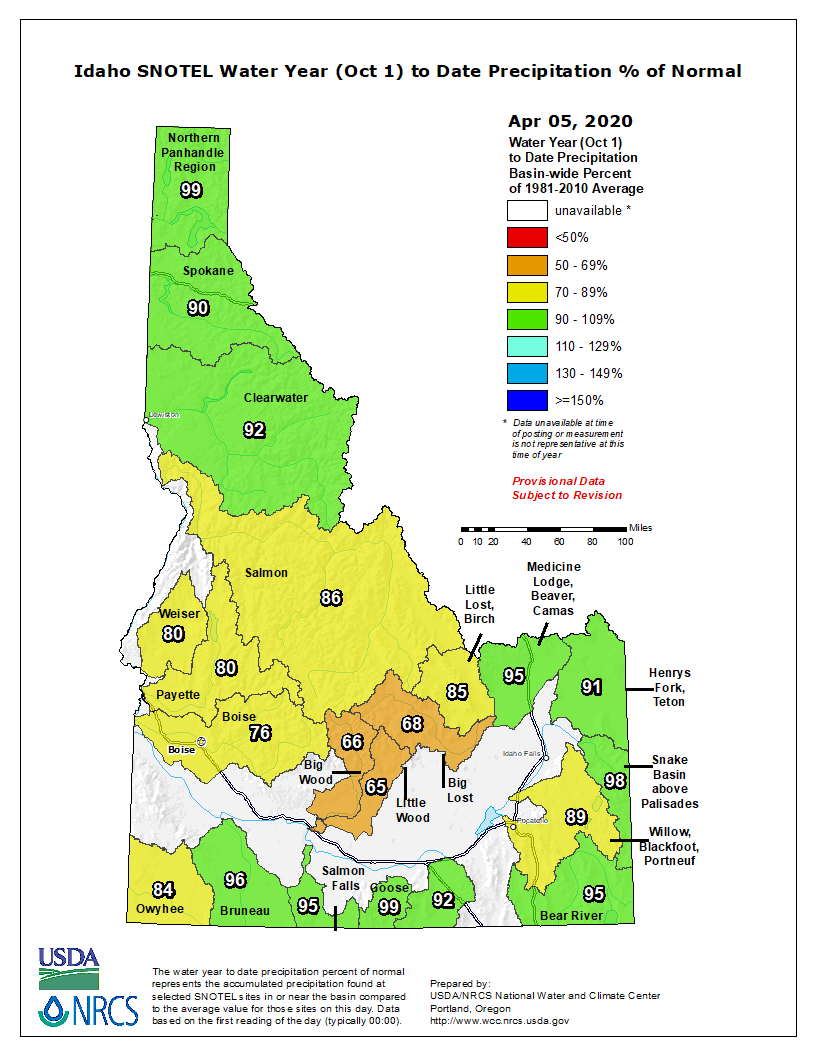
Warming winter temperatures may facilitate mountain pine beetle survival resulting in increased whitebark pine mortality.

In the park, 28% of whitebark pine trees are dead, 30% are infected with blister rust, and 1% have died from mountain pine beetles. Whitebark pine survival is threatened by the introduced white pine blister rust and the native mountain pine beetle. Decreasing snowpacks will shrink wolverine habitat “islands” during the next century threatening species persistence in a key portion of their current range. In 2012, one of only two known wolverine reproductive dens was located in the park. Wolverines give birth in snow caves and are restricted to areas where at least 5’ of snow cover persists until mid-May. Today, the Cascade Range provides the southern extent of wolverine range in the PNW. Wolverines were extirpated from the Sierra Nevada in the mid-20th century. Many culverts and bridges will be vulnerable to these increased flows resulting in decreased access (Figure 3). By the 2040s, the majority of roads and trails will be in transient watersheds with higher and more frequent peak flows in both spring and fall. Currently, 78% of our roads and 97% of our trails are in snow dominated watersheds where spring peak flows are the norm. Recreational AccessĪccess to the park will be severely impacted by changing hydrologic conditions. Mean annual temperature is expected to continue to increase in the Pacific Northwest, warming on average by 2.0☏ by the 2020s, 3.2☏ by the 2040s, and 5.3☏ by the 2080s (Mote and Salathé 2010). Projected Climate Effects Mean annual temperature The road washed out, stranding 70 visitors and their vehicles for 2 days. Heavy rain mobilized river debris clogging a culvert. Tree establishment in subalpine and alpine areas is expected to accelerate with warmer summer temperatures, decreased snow pack, and earlier snow melt.įigure 3. Forest Lineįorest line has moved up roughly 415 feet over the last 50 years. Current NPS monitoring in 13 major stream systems in the park indicate that 7 of these systems already exceed the temperature criteria for bull trout. Bull trout, the most sensitive of these species, need water temperatures < 55☏. Rivers and streams in North Cascades provide some of the most protected, high quality habitat for bull trout, steelhead and Chinook salmon in the Puget Sound basin. Since the late 1970s, the Stehekin River’s peak annual flow event has shifted from spring to fall, and three 100 year floods have occurred since 1995. Park streams at higher elevations and east of the Cascade crest have shown a response to warmer temperatures. The net loss of glaciers has resulted in the loss of 400 billion gallons of water to the Skagit River, equivalent to 44 years of water supply for Skagit County. Glaciers currently provide 6-18% of the runoff to the Skagit River the largest river flowing into Puget Sound also drains 70% of the park. The rapid loss is driven by warmer air temperatures, which increase the rate of summer melt and decreases winter snowfall (Figure 1 and 2). Glaciers at North Cascades have lost 53% of their area since 1900 AD. since 1950 resulting in diminished mountain snowpack. As a result, the mean winter freezing level in this region has risen about 650 ft. Mean winter minimum temperatures at high elevation stations (above 4000 ft.) have risen about 5☏ since 1950s.


Observed Climate Effects Mountain Snowpack

Reconstructed cumulative balance of 4 North Cascades glaciers monitored by the NPS (1993-2013) and South Cascade Glacier (USGS, 1959-2011).


 0 kommentar(er)
0 kommentar(er)
